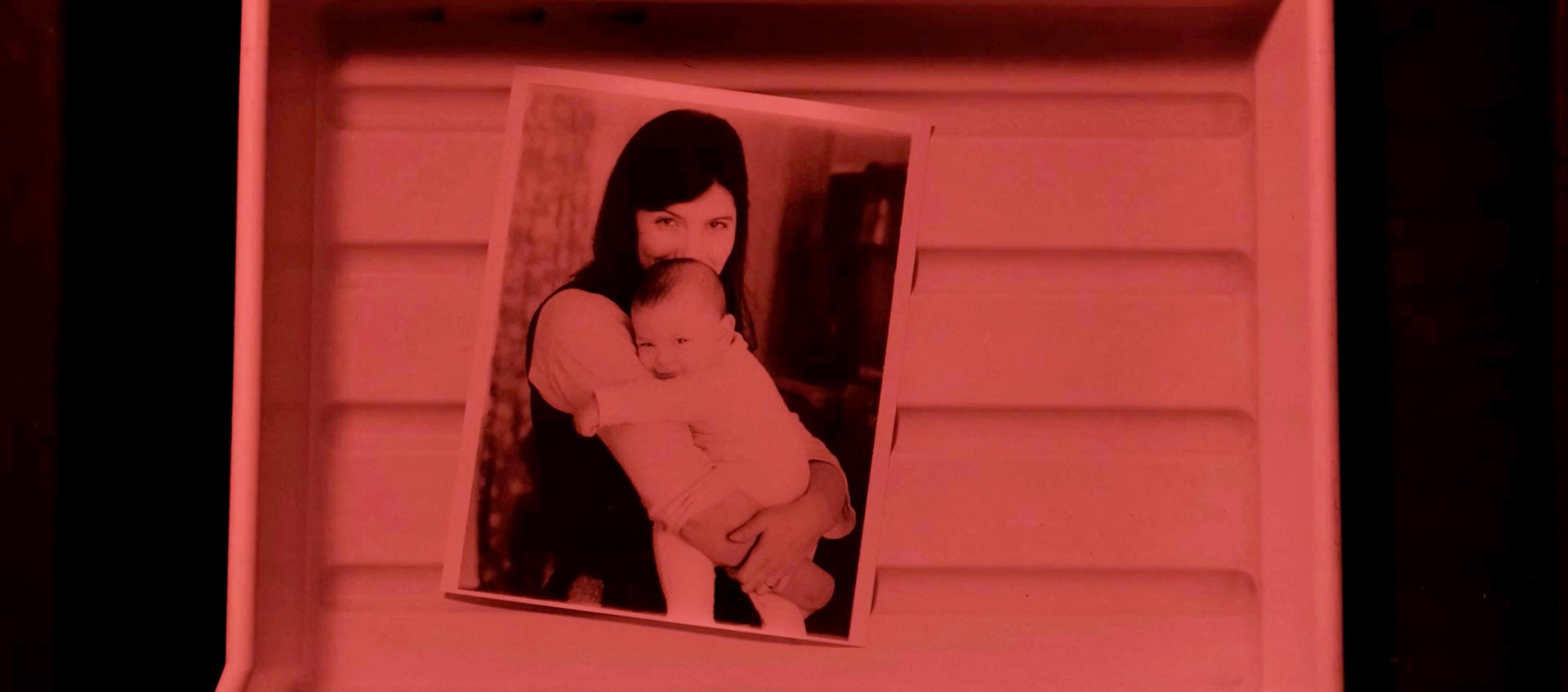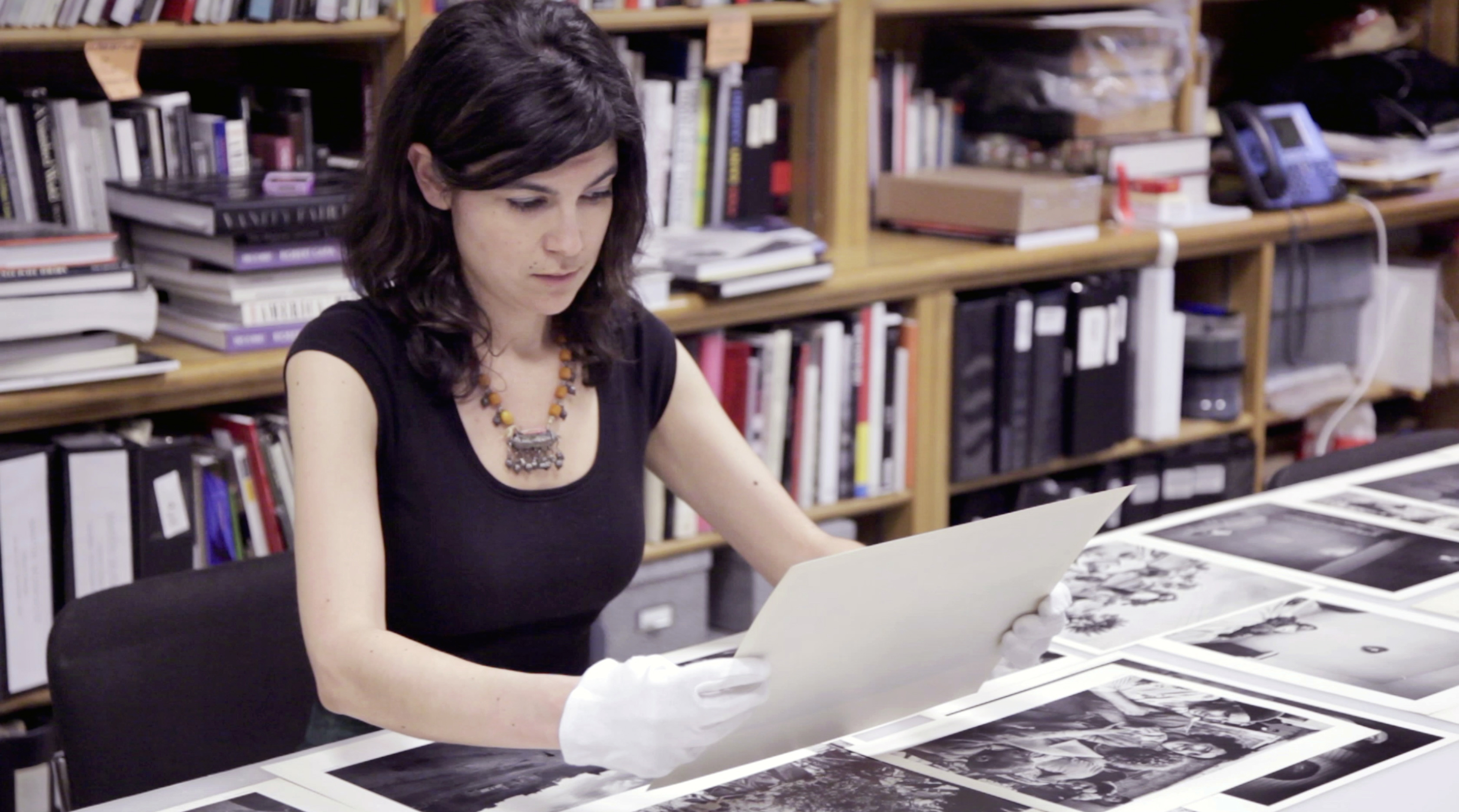By Will Comerford.
The blurring of perspectives in this personal documentary reinforces how much mother and daughter are truly occupying similar psychological spaces, despite living in different decades and contexts.”
Why do we document? Why paint a hunt on a cave wall, or write down what Jesus or Confucius said? Why scratch sound waves onto foil or film a train arriving? Why videotape a backyard barbecue or live tweet a political debate? Such questions ran through my mind on viewing Rachel Elizabeth Seed’s quietly searching documentary A Photographic Memory, a meditation on the mother who died when she was eighteen months old, photographer and journalist Sheila Turner-Seed.
This is an intimate documentary, a form that has been popular over the past few decades — though often with a subject matter that can be salacious, as in Capturing the Friedmans, or at the very last unseemly, as in My Architect (which is perhaps the closest analog as they both involve filmmakers seeking connections to creative parents whom they barely knew). But if you remove the touch of the sordid or sensational, what is left? Do we still value those documents? Do they make a show?

In fact, the lack of fireworks allows us to meditate more closely on the essence of recording, especially given the nature of the family Seed was raised in.
“We didn’t just film the milestones,” Rachel narrates, as she sorts through extensive negatives, slides, prints, and reels of her family archive, “we filmed everything.” And as she digs, that question persists: Why document? Why record?
And, wonderfully, we get not just the filmmaker’s ruminations, but also those of her mother, who wrote thoughtfully and extensively on her personal journey as an exceptional, career-oriented woman in the 1960s and 70s, as well as those of the numerous subjects of her interviews, the preeminent photographers of the day, including Henri Cartier-Bresson and Gordon Parks.
Among all these voices, and all these philosophic ideas, no single answer is conclusive. Every idea posited in one part of the film is checked or challenged by another point of view.
The filmmaker’s father, Brian Seed, might suggest that we record images to make a living. As a widower he supported his family in part by licensing out photos of young Rachel and her family as stock photos with captions like “8-year old’s birthday party” and “Child watches Sesame Street.” On the other hand, numerous voices in the film point out that the work of photography is a long, lonely slog that doesn’t mesh well with family life. And Pulitzer-winning photographer Brian Lanker, in a 1972 interview with Sheila, says it’s important to draw lines. “The most important thing to me in my life is not the photograph, not the camera. It’s the close circle of people around me. If you don’t have work in the right way it hurts your love. And if you don’t have love it hurts your work.” This challenging work-life boundary enters the foreground of the documentary when Rachel’s multiyear project seemingly leads to her marriage to and subsequent separation from Joseph Michael Lopez, one of the film’s co-producers and directors of photography.
Another reason for recording that the documentary highlights is to keep time from slipping away. “With a camera in hand, we can relax into the illusion of immortality,” Rachel observes. However, the film also clearly shows us the paradox of extensive recording: We’re left with an overwhelming glut of content that can’t possibly be remembered. Her mother’s highly praised Images of Man series, which consisted of slides and synchronized audio, needs to be sought out deep in the archives of Cornell Capa’s International Center of Photography. “A photographer’s work can easily disappear if there’s no one looking after it,” Rachel’s father comments. (And in an intriguing memory from his days as a Life magazinephotographer, he points out that Marilyn Monroe could see from his multiple Leica cameras around his neck that his photographs would last longer than those taken by the swarm of newspapermen with 4×5 cameras.) Cartier-Bresson, in his interview with her mother, sums up the futility of capturing seconds of time: “Life is once, forever.”

A more compelling reason to record is put forward by Cornell Capa, who commissioned Sheila’s interview series: “Certain things are the property of everyone: the air, the sun. To be able to translate that into stories is a great attraction.” And yet, the film asks, how valuable are these stories if they lack context, and lack truth? Both Sheila and her mother point out that the stories we pull from images are often false or misleading.
To document injustice is another compelling answer to the question, and it emerges in the audio of Sheila interviewing her own father, who fled antisemitism in Russia, and who recalled his own grandfather being killed in a pogrom. Later Sheila interviews Gordon Parks, whose work powerfully captured the fight for civil rights in the south. However, both Sheila at the time and Rachel today seem somewhat troubled by Sheila’s uncredited appearance, as one of twenty-five nameless, faceless, nude female bodies in a lesser-known book Parks created. “I imagine you might have felt flattered on being asked,” Rachel observes, “but it also reinforced the idea that your value was in your body.”
But perhaps the most powerful answer the documentary puts forward is that recording allows us to communicate, to ask and answer questions, from beyond the grave. Through the course of this film, we start to get a sense of a true connection between Rachel and Sheila, despite their never truly having known each other. At a certain point in the film, you realize that Rachel has created a trope in which she (Rachel) is providing answers to questions posed by her mother in her archival interviews. At first I felt this was an odd manipulation: decontextualizing her mother’s questions to create that illusion of a conversation. But as you watch the film, this technique feels increasingly appropriate. With frequent jumps through time, it often takes a moment to discern whether we are looking at the mother, Sheila, or at the daughter, Rachel. And the same happens when we hear the voiceover: Is it Sheila’s audio from one of her interviews? Or is it Rachel reading Sheila’s journal? Or making her own observation? All this blurring reinforces how much mother and daughter are truly occupying similar psychological spaces, despite living in different decades and contexts.
“Now I have a picture of you,” Rachel reflects near the end of the film. Indeed, she has a whole, convincing conversation, albeit brief, with her mother Sheila. And while she expresses that she feels she no longer needs to look back, “in a way it makes it harder to know more what it was that I missed.”
Will Comerford has published criticism and short fiction, with work appearing in Raritan, The Greensboro Review, and other literary journals.

